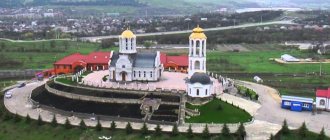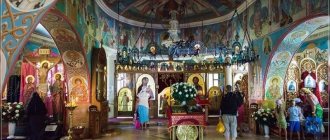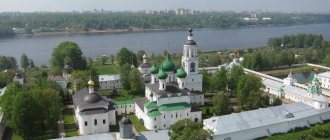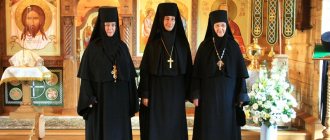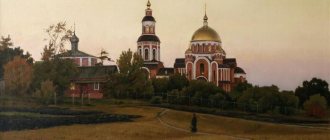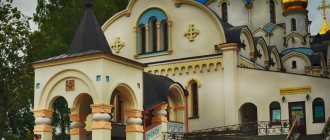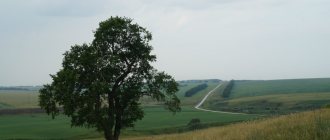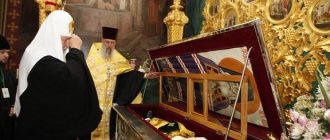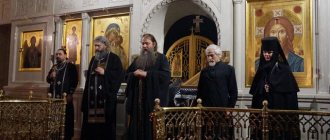The Zadonsk convent has come a long way from its inception to official recognition. It happened in 1873: then the monastery was for men, the monks were engaged in work on the land, fishing and serving God. The place was extremely revered during the tsarist regime, but with the arrival of the Bolsheviks, persecution began.
Today the convent is named after the famous religious figure Tikhon of Zadonsk. His life's path was not easy, but he spent years in sincere and continuous service to God, wrote many educational works and performed many miracles. It was his skete in Zadonsk that became the site of the current St. Tikhon's Transfiguration Monastery.
general information
St. Tikhon's Transfiguration Convent in Zadonsk has its own long, difficult history. At the beginning of the holy place, it was a monastery for male clergy. It arose in 1873 on the site of the last worldly days of St. Tikhon of Zadonsk. The temple was very revered in Tsarist Russia. But with the advent of Soviet power in the 20th century, the buildings were given over to secular institutions, and were returned only with the collapse of the USSR. In 1920, the monastery for male novices ended its existence, and only in the early 90s of the 20th century a revival of the Orthodox women's monastery took place in its place. Today it belongs to the diocese of Lipetsk and Yeletsk and is one of the most important on this earth.
Abbots, governors
- Prokhor (mentioned in 1632. It can be assumed that he was the first successor in the management of the pious elders Cyril and Gerasim of Zadonsk - the founders of the Zadonsk monastery).
- Leonid
- Ephraim I
- Ephraim II
- Tryphon (1693 - 1697)
- Ignatius
- Filaret
- Anthony
- Euthymius I
- In schematic Abel
- Euthymius II, in schema. Eusebius (1735-1745)
- In schematic Nikita
- In schematic Irinarch
- In schematic Pachomius
- In schematic Tikhon I
- In schematic Tikhon II
- In schematic Pitirim
- Stephen
- Tikhon III
- Barsanuphius I (- 1735)
- Barsanuphius II (1751 - ?)
- Cornelius, in the schema Cyril (mentioned 1763)
- Zosima
- Nifont, in schema Nikolai (1767 - 1774)
- Theodosius (1774 - 1776)
- Samuel I (1776 - 1777)
- Benedict (late 1777 - July 14, 1778)
- Samuel I (July 14, 1778 - 1787)
- Kliment (Beloshapkin) (late 1787 - 1789)
- Timofey (Sambikin) (1789 - 1805)
- Zosima, in the world Mikhail
- Barsanuphius (? - 1861)
- Hermogenes (Kritsyn) (2004 - 2005)
- Trifon (Blue) (2005 - 2011)
History of the monastery
The convent in Zadonsk, Lipetsk region, began its journey back in 1768, when Tikhon left the department and retired. The elder retires to the Teshevsky Mother of God Monastery. According to legend, the worshiper had his favorite place, “earthly paradise,” a secluded corner in the forest. Here he dug a spring with his own hands. A few years later, Tikhon died, and his relics were recognized as incorrupt. The construction of a church began at the site of the saint’s solitude.
Igumensky yard
In the period from the 17th to the 18th century, the Preobrazhensky abbess was served by boyar children, among whom the Solomin family is known. Nowadays, Abbess Sophia, who was born in 1947 on February 21 and was educated as a general nurse, is the abbess of the temple.
The woman was tonsured a nun by Alexander Mogilev, Bishop of Galich and Kostroma in 1994. Later she was abbess at the Holy Trinity Convent and three years later received the rank of abbess. Abbess Sophia became the abbess of the women's monastic community in the city of Kirov in 2005.
Construction of the monastery
Archimandrite Seraphim began to build a monastery - an oak frame was installed on the source of holy water, several huts were erected for the worshipers of the Lord, and an apiary was founded. In this guise this place existed until 1864.
A year later, a stone and wooden church was erected on this site, which became increasingly popular among the monks. The issue of building the future St. Tikhon's Transfiguration Convent in Zadonsk remained pressing; it required effort and time. Archimandrite Dmitry led the construction of the facility. In 1873, the Tikhonovsky non-staff monastery for men was opened. Not only a two-story cathedral and a church were erected, but also a bell tower, buildings for the brethren, and the apiary was expanded. The owner of the nearby lands, a landowner, donated the forest, and the monastery was able to exist at the expense of its own industry. A little later, a stable, a chapel, and a hotel for parishioners were built. A hospital even started operating here. At the beginning of the twentieth century, it numbered about one hundred clergy.
Caves
The origin of the caves has two versions. According to one of them, on July 10, 1874 (the day of memory of Anton of Pechersk), Abbess Arsenia personally began digging caves. Three nuns (Agniya, Victorina, Nikodima) helped her. The work lasted 13 years.
The abbess wanted to build an underground temple in them. Unfortunately, I didn’t have time. She called the main passage of the caves “The Way of the Savior’s Cross.” The second passage was given the name “Passionate Path of the Mother of God.” In the 30s of the last century, several people wanted to explore the caves. They didn't come back. The authorities decided to fill them up. After 40 years, the blocked entrances were dug up again.
The total length of the underground corridors is about 165 meters. At the moment, visitors can move along them no further than 50 m (to the room where the stone block is located). In the caves the air temperature is always the same all year round – +8°. The entrance begins from the church vestibule of Arseny the Great (in the lower part of the Kazan Cathedral).
According to many archaeologists, historians the caves appeared much earlier. Therefore, it was not by chance that the site for the construction of the Kazan Church was chosen. It is located directly above the entrance to the dungeon. Mother Arsenia only improved the underground galleries: she strengthened the vaults, walls, and floors.
Desolation of the monastery
In the times following the October Revolution of 1917, Soviet atheism set in, and the clergy were expelled from the monastery. Tikhon's relics were desecrated, all property was taken away, and the monastery began to be disbanded. It should be noted that the bell tower was dismantled during the Second World War so that it would not be noticed by enemy troops.
During Soviet times, there was a children's correctional colony, a state farm, a hospital, a school, and even a neuropsychiatric dispensary here. But even then, nurses maintained the source of the monastery, now the Holy Transfiguration convent in the city of Zadonsk, and brought patients to it. The police often set up a cordon, and opponents of the church caused trouble, for example, filling the spring with cement or pouring in bleach. The boarding school was here until the collapse of the USSR; the buildings were completely destroyed.
Private hotel for pilgrims
The mini-hotel is located at the address: Zadonsk, st. Lenina, 28. Built in 2013. The guest house does not have stars, but all the rooms are cozy, cleaned every day, and it is convenient for the whole family to stay here. Check-in time is at 8 am and check-out time is at 21 pm. Meals include only a la carte breakfast, but the rooms have a kitchenette for self-catering.
The hotel has only 11 rooms. The hotel is managed by Mother Magdalene, she will advise all guests on accommodation in the city and on the schedule of services at the Zadonsky Monastery. Prices start from 2 thousand rubles per night in a four-bed room. There is internet throughout the hotel. For guest comfort, the rooms are equipped with air conditioning. Convenient parking: you can park your car in the yard.
Revival of St. Tikhon's Monastery
In 1991, the lands were transferred to the service of God. Father Peter took up the task of reviving from the ruins. The construction of new buildings and the reconstruction of what could still be saved began. The road in the forest was completely destroyed, it was hot, the water was five kilometers away—construction was difficult. Worship services were held right on the street.
Thanks to the hard work of the sisters and architects, the monastery and all the buildings were restored. First, the source and the road to it are improved. In 1993 the Trinity Church opened.
Later, the chapel of Tikhon of Zadonsk was built. It is equipped with two descents to the font and to the holy spring.
Stone plate
In one of the caves, the nuns discovered an unusual stone on which there are prints of women's hands and knees. The first legend says that the traces were left by Mother Arsenia. The surface of the stone melted from her fervent prayer. According to the inhabitants of the monastery, they belong to the Mother of God herself.
Soviet scientists studied the stone in the 70s. Their findings were unexpected. The dents on the surface are actually melted. They also were unable to determine the chemical composition of the slab. It's like she's of extraterrestrial origin.
The stone slab is believed to have healing properties. Anyone who touches it with their lips or forehead with sincere faith, hope, and prayer will receive deliverance from the disease. It especially helps women suffering from infertility.
St. Tikhon's Monastery today
Now the reconstruction is completely completed. Now this territory is home to about a hundred abbots who, in addition to divine services, also work:
- in prosphora;
- in the garden;
- in the poultry house;
- in the church shop;
- in library;
- in the poultry house.
Mothers also conduct organized excursions for pilgrims by appointment. Today the monastery owns an area of about two hundred hectares, agricultural machinery and vegetable gardens, cows, chickens. If we talk about divine services, the sisters take turns and read the psalter around the clock.
Shrines of the monastery
On the official website of the Zadonsk St. Tikhon's Transfiguration Convent in the Lipetsk region www. zadonsk-skit.ru you can find a complete list of temples and shrines. This:
- Trinity Cathedral. The primary structure of this land. It was built in 1883 as a prototype of the Cathedral of Christ the Savior in the capital. During the time of desolation it was very much destroyed. The revival took place in 1993, the builders worked very quickly, and the building was rebuilt within a year. In 2007 it was recreated. The most important shrines are the images of the Most Holy Trinity, the Iveron Mother of God and St. Tikhon. The latter contains a bowl with particles of the relics of many martyrs and parts of shrines from the Holy Land. In the last year of the 20th century, a piece of Tikhon’s relics was brought here. Thanks to the Iveron Icon of the Mother of God, long-awaited children were born to childless couples.
- Assumption Church. Located in the basement of the Trinity Cathedral. It is dedicated to the Dormition of the Mother of God. It was finally restored in 2001. The interior decoration is very simple and does not distract from prayer - white walls and a wooden iconostasis. The most famous icon is “It is Worthy to Eat.” For a long time it was burnt out, the words on it were impossible to read. At the very beginning of the 21st century, the image was updated - the colors became brighter and even the Virgin Mary and the Child appeared blush on their faces. Along with it, the “Recovery of the Dead” icon was also updated. The Bleeding Crucifixion of the Savior is also located here.
- Bell tower and Transfiguration Church. The bell tower was built in 1877. In its lower part there was a small gate church. It was dismantled during the war of 1941-1945, because it was feared that the spire would be very noticeable to enemy troops. After the collapse of the USSR, the bell tower began to be restored and was completed in 2008;
- Chapel-cell of St. Tikhon. Erected in memory of the cell built by the elder himself. It was here that he discovered the spring and so loved to pray alone;
- A source of holy water. The same spring that Saint Tikhon himself consecrated with his prayers. Today, thousands of believers come here every year to collect holy water for themselves and their loved ones;
- Iveron icon. This especially revered icon was painted in 1879. For a long time it was kept outside the walls of the monastery; it was preserved by three generations of laymen. After reunification with the church, the icon streamed myrrh for two years. Women constantly come to her with a plea for help in the birth of a long-awaited child, as well as with gratitude for parenthood;
- Bleeding Crucifixion. In 2000, a miracle happened within these walls - the bleeding of the Crucifixion. He was transferred to the Trinity Church for worship;
- Tomb. Here, every year on Victory Day over the Nazi troops, a service is held to repose the souls of soldiers who died for their country. The mass grave is located near the cathedral fence. In 1996, the incorrupt remains of the first governors of the monastery were discovered, among them the only individuals that were able to be restored were Hieromonk Melchizedek and Schemamonk Spiridon, Hieroschemamonk Tikhon.
- Revered tombstones. Parishioners note that when applied to the “sacred stones,” healing of ailments occurs.
Architectural features
Serafimovich (the convent of the Volgograd region has buildings of unique architecture on its territory) is attractive for tourism. First of all, it is famous for the Kazan Church. It was built in the Russian-Byzantine style. The cathedral has the shape of a cross, upper and lower parts. Below is the church named after St. Arseny the Great, built in 1888.
The Kazan Cathedral is distinguished not only by its unusual architecture on the outside. Inside it there are beautiful columns decorated with capitals. Marble for them was ordered from Italy. They were made in the St. Petersburg workshop of the sculptor Andrei Andreevich Barinov. The temple is quite spacious. It can accommodate up to 5,000 people.
The Church of the Transfiguration of the Lord was created in the Baroque style. It is decorated with 33 domes (the number of Christ's earthly years). They are installed in 4 tiers. There are 8 chapters on the three lower ones, 1 crowns the top. Inside the vaults are painted with colorful frescoes.
Other buildings are more modest:
- Bell tower;
- gate church - consecrated on July 20, 2015 in honor of St. Nicholas the Wonderworker;
- Chapel named after Seraphim of Sarov;
- abbot's house;
- belfry in the shape of an arch;
- guest house.

